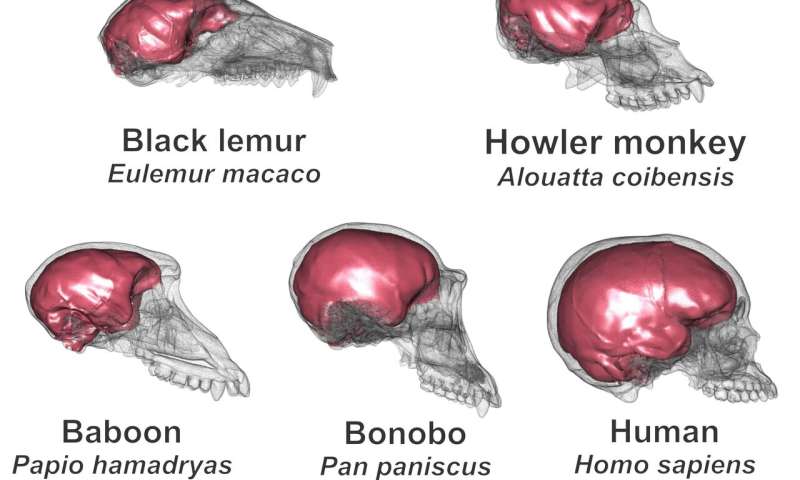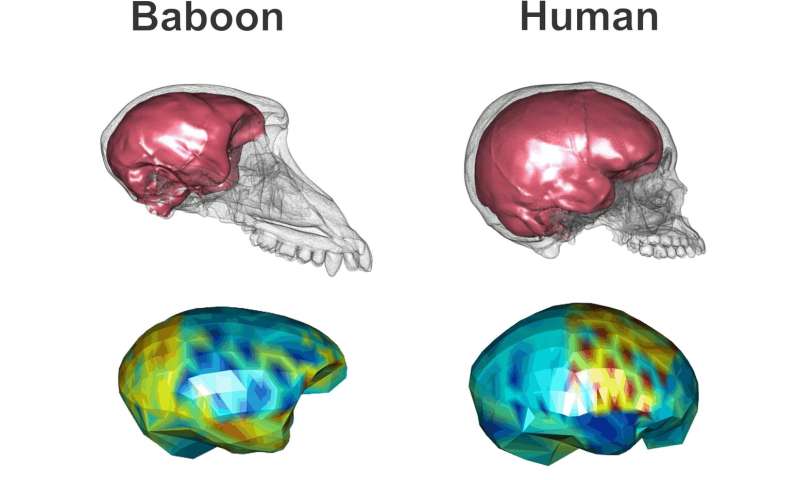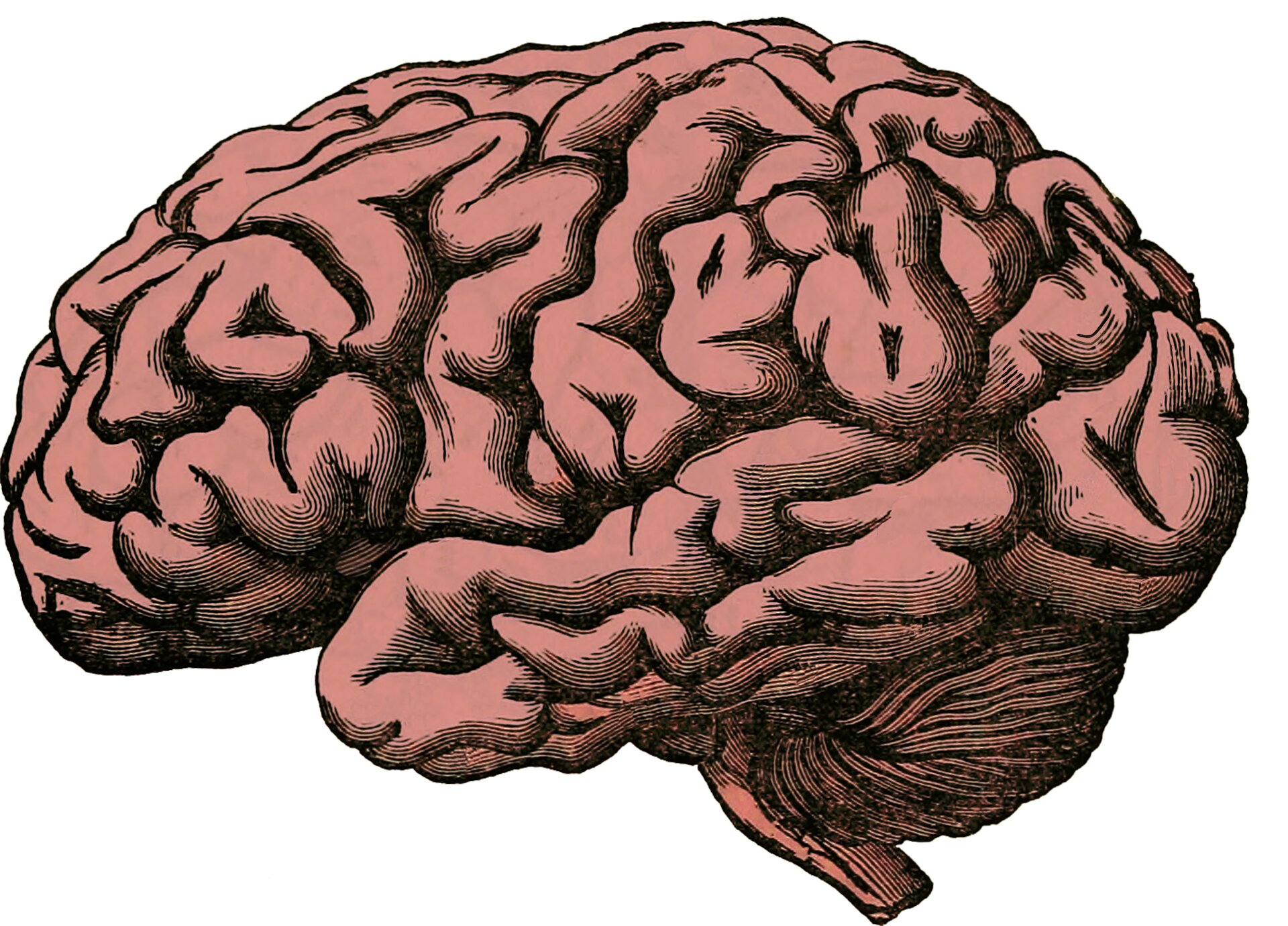#The human brain: not just large but finely shaped
“#The human brain: not just large but finely shaped”

Large brains have long differentiated humans and primates from other mammals and there is a clear evidence that brain mass increased through time.
Now a new study by the University of New England, in collaboration with Italian and American institutes, has shown that the evolution of higher cognitive capacity is not only due to having a larger brain but also due to the brain having the “right” shape.
While brain size has long been the preferred measured trait for anthropological investigations, the brain is not uniform in shape and displays considerable structural variation.
The researchers were particularly interested in how humans evolved to have the distinct large, globular shaped brains we have today.
To answer the question they conducted a novel large-scale evolutionary analysis using a large samples of 3-D digital reconstructions of primate brains.
The team used 3-D shape analysis to measure the morphological variation between the different primate groups and a novel phylogenetic strategy to reconstruct the main morphological changes occurred through the primate lineage.
Their findings reveal that the brains of great apes such as chimpanzees and humans as well as papionin monkeys—baboons and macaques—are characterized by fast evolution and larger brain size. These characteristics sets them apart from smaller lemurs and New World monkeys which evolve more slowly.

The brains of papionins and great apes also have different structures.
“Humans and, to a minor extent, the great apes display a massive reorganization of the brain areas devoted to complex thinking, articulated language, social behaviour and problem solving such as the frontal lobe and the prefrontal cortex,” lead researcher Dr. Gabriele Sansalone said.
“Our heat maps clearly show the great bulging prefrontal cortex of the human brain, whereas the brains of baboons are characterized by changes in the temporal and occipital regions.”
The study “Variation in the strength of allometry drives rates of evolution in primate brain shape” has been published by the Proceedings of the Royal Society B.
More information:
G. Sansalone et al. Variation in the strength of allometry drives rates of evolution in primate brain shape, Proceedings of the Royal Society B: Biological Sciences (2020). DOI: 10.1098/rspb.2020.0807
The human brain: not just large but finely shaped (2020, July 9)
retrieved 9 July 2020
from https://phys.org/news/2020-07-human-brain-large-finely.html
This document is subject to copyright. Apart from any fair dealing for the purpose of private study or research, no
part may be reproduced without the written permission. The content is provided for information purposes only.
If you want to read more Like this articles, you can visit our Science category.
if you want to watch Movies or Tv Shows go to Dizi.BuradaBiliyorum.Com for forums sites go to Forum.BuradaBiliyorum.Com




